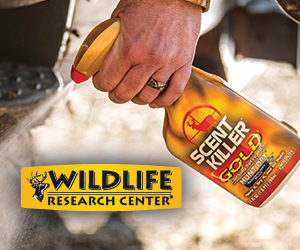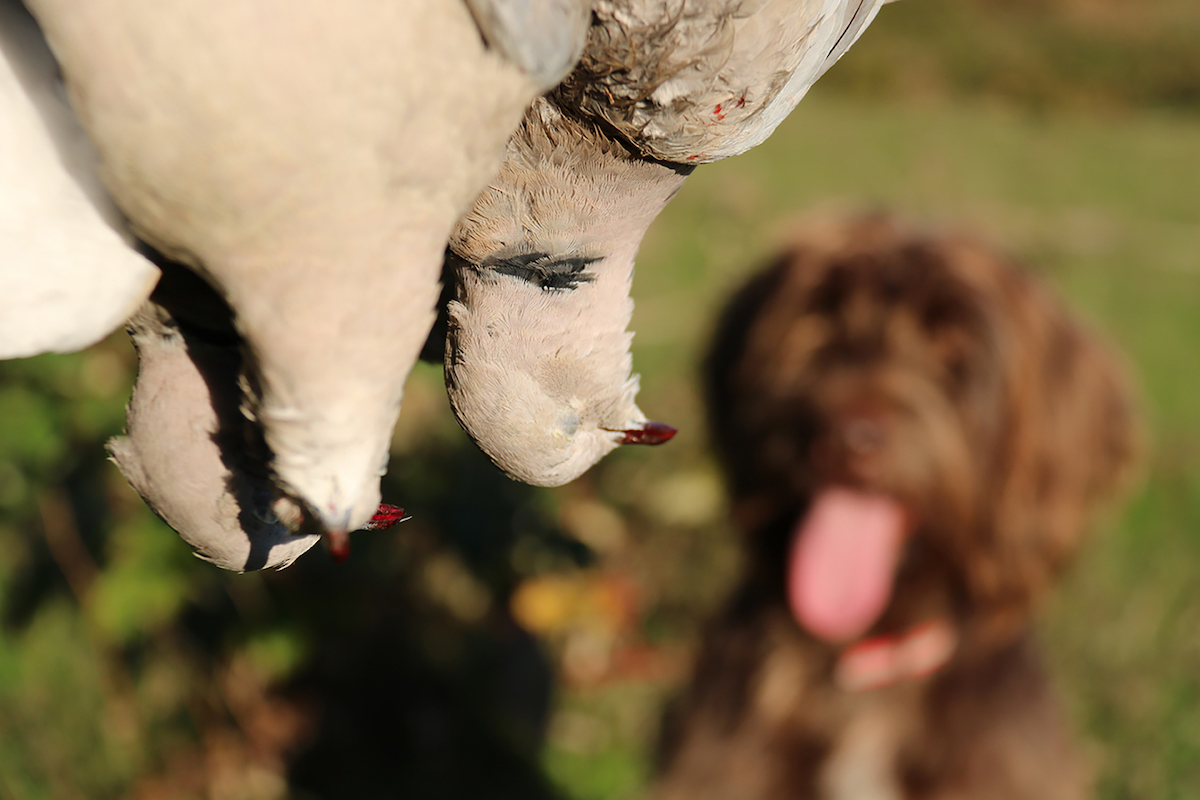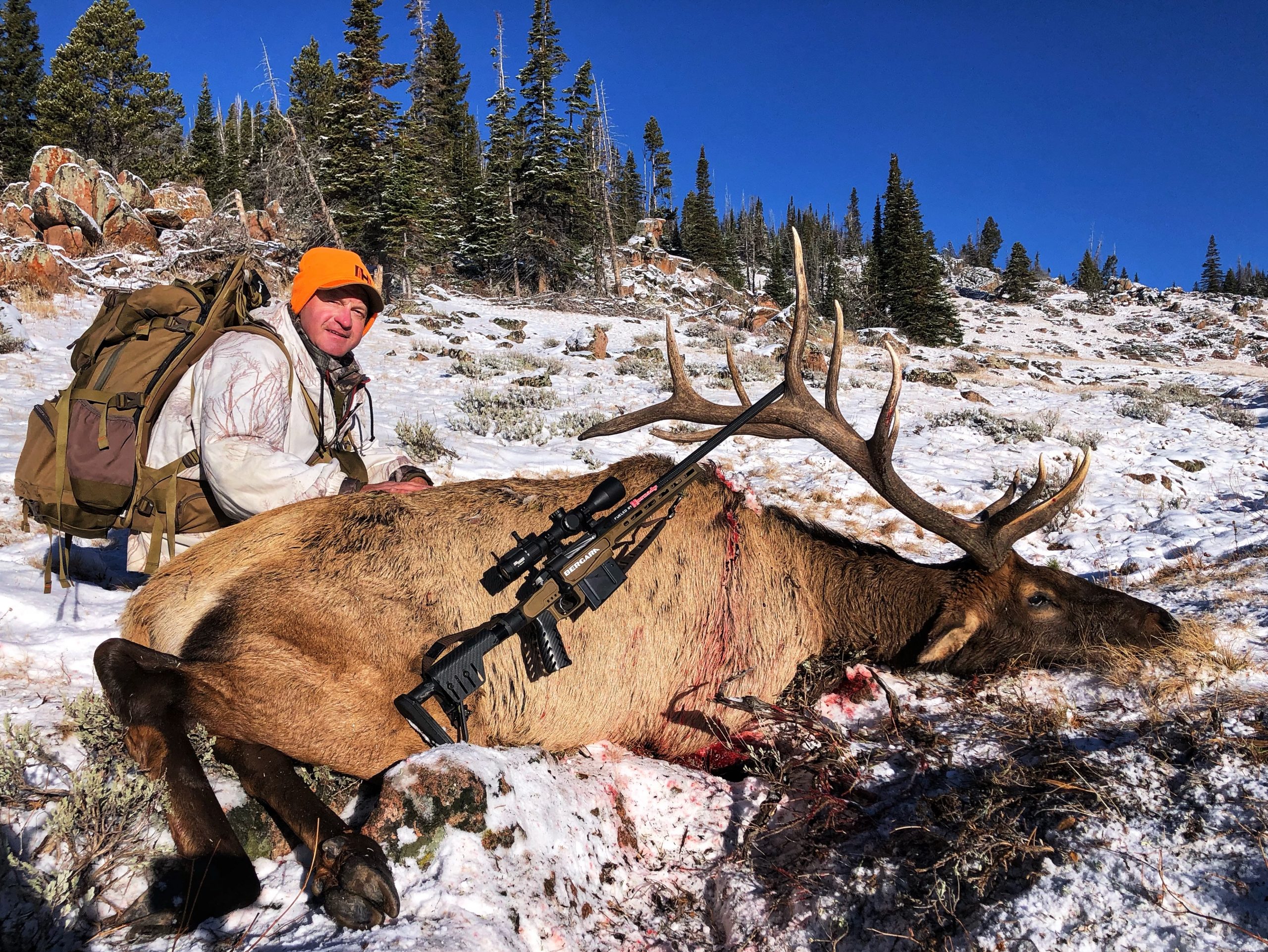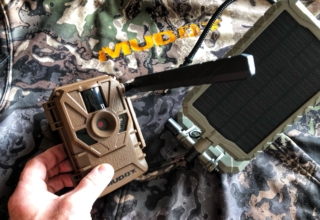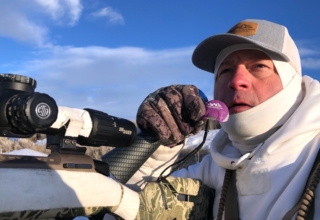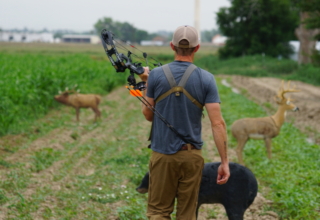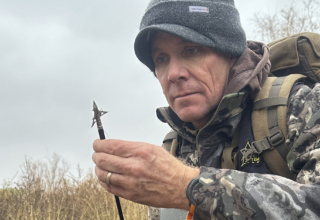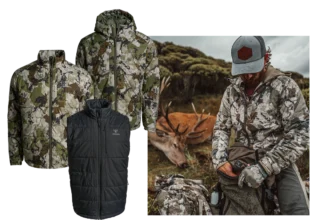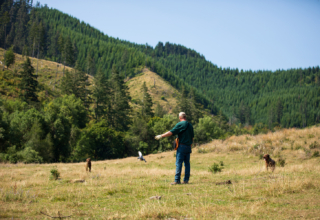New from Hornady, the ELD-VT (Extremely Low Drag Varmint|Target) promises remarkable accuracy, rapid fragmentation, and absolute lethality. And, the new-for-2024 V-Math also proves supreme on toothy critters.
by Mark Kayser
Predator hunting, with coyote hunting leading the enthusiastic participation, has gripped the hunting community for the past couple of decades. Predator hunting had a dedicated following back to the 1950s and prior. The Burnham Brothers started their predator hunting call company in 1952, spurring the explosion of predator gear today. In the 1980s, as a young lad, I found a few scattered predator hunting equipment choices in a nearby Herter’s store. However, most aisles were dedicated to pheasant hunting (I grew up in South Dakota), waterfowl, and deer pursuits. Today, nearly every sporting goods store has at least one aisle or more devoted to the sport. Plus, companies methodically release new products to aid your success and keep them in business.
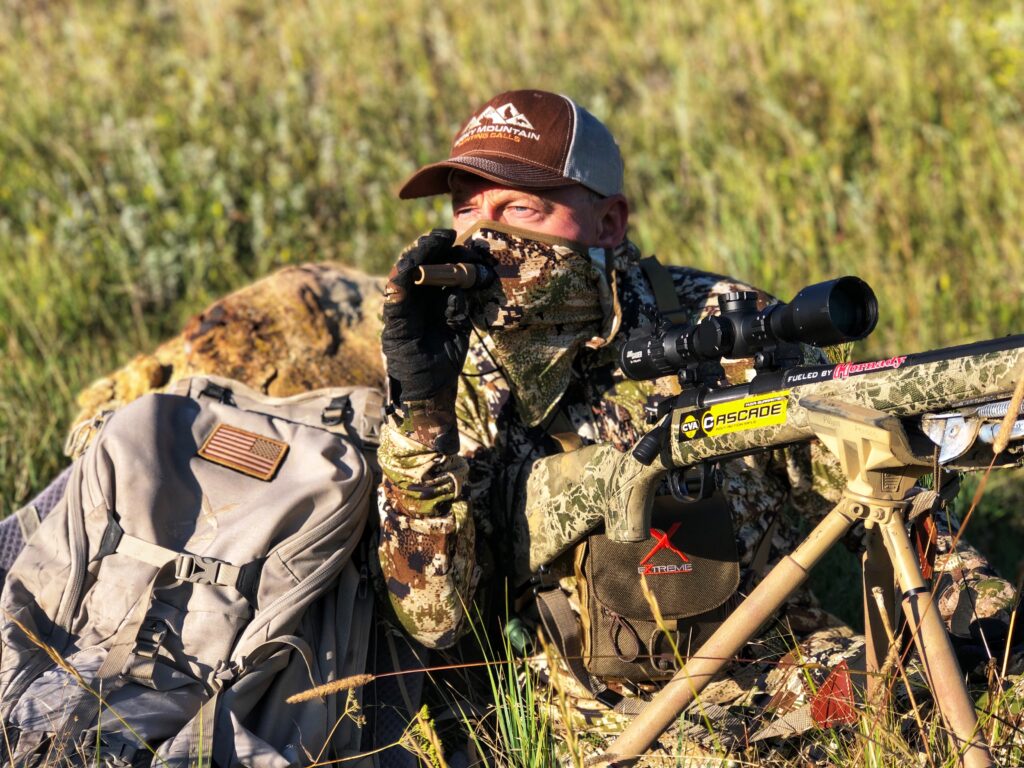
All Hail The V-Max
Hornady saw this revolution of predator interest early and introduced the V-Max line of bullets. Their flagship ammunition lineup of various calibers is Varmint Express, loaded with the V-Max. The predator-hunting crowd has accepted the bullet due to its hollow core with a shaft attached to the polymer tip.
Upon impact, the shaft drives back into the bullet. Extreme fragmentation occurs at high and low velocities to end the marauding of any beady-eyed predator. You cannot go wrong by loading your magazine with a stack of Varmint Express cartridges topped with the proven V-Max. This combination has been the demise of most of my coyotes. Even in the past few years, as I have beefed up to the 6.5 Creedmoor for coyote duties, the 95-grain V-Max continues to deliver.
Hornady Genius
Can you make a better mousetrap? Hornady thought so and delivered the latest varmint pounder, the ELD-VT. The ELD-VT is a ballistic win. It is a low-drag bullet that will hammer long-range varmints and help you conquer shooting competitions. If the name sounds familiar, it should. Hornady’s ELD-X and ELD Match bullets took the ammunition world by storm. Here is why.
In 2011, Hornady adopted Doppler Radar Technology, which the military has used for weaponry tracking since the 1960s. Doppler revealed what a chronograph could not by measuring the shift or frequency changes reflected from a moving object every one to two feet.
That Doppler data detected when a bullet began not to fly as well as it should and led to the Heat Shield Tip’s development. It is crafted from a patent-pending material that would not reach a rubber-like state until 475 degrees and with a melting temperature above 700. The new composite material would not degrade at typical velocities.
Hornady increased the tip size and optimized the Meplat diameter for more heat capacity without a loss in BC. And since Hornady wanted the ELD-X bullet to work for all hunting applications, long- and short-range, a larger diameter shank combined with a new bullet design allowed for expansion at low velocities, 1,600 fps, and top-end speeds. Aggressively launched in 2016, the ELD revolution led to the ELD-VT being available in bullets only for reloading or in V-Match ammunition. Five calibers are currently available: 22 ARC, 6mm ARC, 6mm Creedmoor, 6.5 Grendel and the 6.5 Creedmoor.
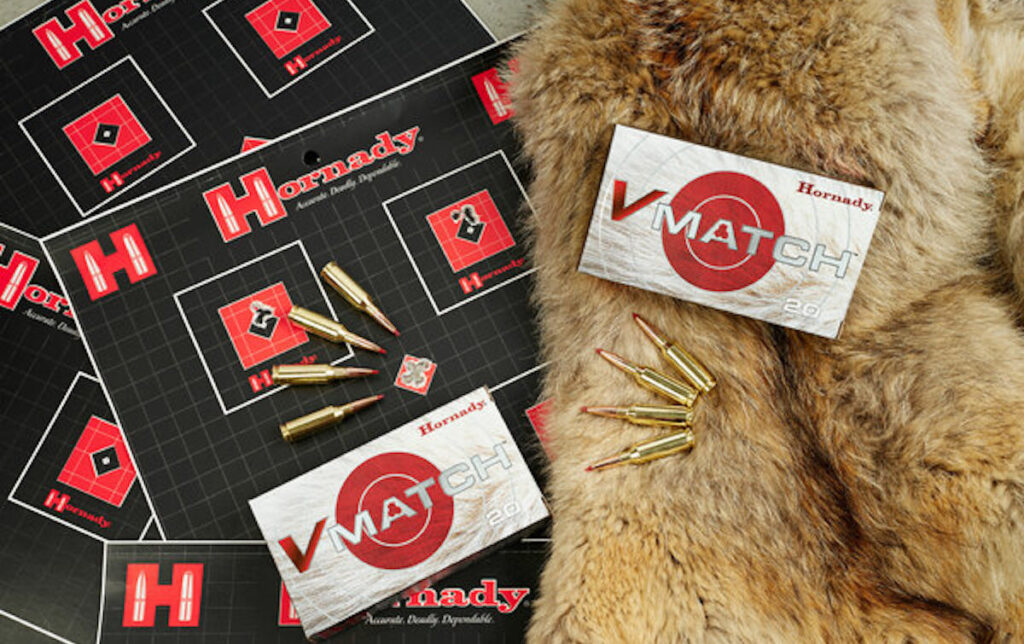
The ELD-VT
What sets the ELD-VT apart from so many other bullets is mainly described above in the development of the ELD, more than seven years prior. Like its older brother the V-Max, the ELD-VT relies on a polymer, Heat Shield Tip. This is the same proprietary technology used in other ELD bullets, and the Heat Shield Tip counters the effects of heating while in flight. That equals a tip that maintains its shape for consistent aerodynamics and the lowest drag from launch to impact, an update from the V-Max. And like its older brother, when the tip drives back into the core it radically fragments.
Another update includes using the AMP (advanced manufacturing process) bullet jacket. In brief, Hornady intricately upholds consistency in concentricity and thickness to guarantee repeated peak performance. Best of all, when you combine all the involved breakthroughs, you have a bullet that performs equally at high and low velocities.
My test centered on the adaptable 6.5 Creedmoor with my current coyote rig, the CVA Cascade XT. I topped that rifle with a lightweight riflescope, the Sig Sauer SIERRA6-BDX 3-18x44mm, and hushed it with the Silencer Central Banish 338. This 6.5 Creedmoor rig is relatively lightweight for the long walks I typically take to get into coyote recesses that few others hunt.
My pasture range delivered groups that averaged .85 inches with the 100-grain ELD-VT in V-Match ammunition. An MOA of less than a minute of angle was a guarantee throughout several bench rest outings.

In the field, I tested the bullet on several coyote sets between elk and deer hunts. One particularly cool, fall morning stood out as I began sending the sounds of coyotes followed by a jackrabbit in despair across a sagebrush plain. I had nestled into a large patch of sagebrush to blend in with my dog, Sully, lying beside me as a secondary spotter. After 45 minutes, nothing showed, and I was putting my calls away when the flash of fur more than 800 yards out caught my attention. It was a coyote pair.
They had to drop into a canyon to reach me, giving me time to go prone. One coyote soon appeared, and I waited a minute for the second, but it took too long as the first coyote was now eyeing my dog.
The coyote sat down, and I zapped a quick range of 200 yards. I went hot with the second coyote a no-show and the first one in full scrutinization mode. The 100-grain bullet slammed the coyote in the chest, and Sully raced ahead to claim the coup. Upon examination, the bullet fragmented inside as advertised, with no exit. Sully agreed it was a great test morning!
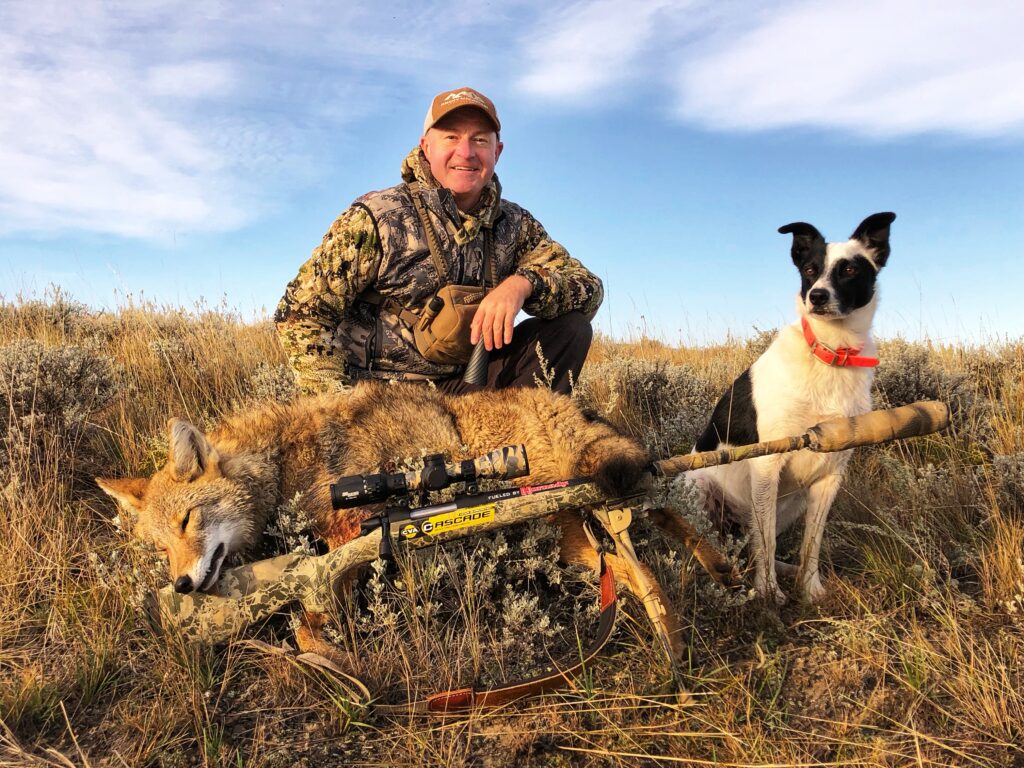
If you are setting up a new varmint rig, having accuracy trouble with a current rifle, or wish to try something new like so many of us, the ELD-VT could be your answer. I know my testing will continue, coyote by coyote.

